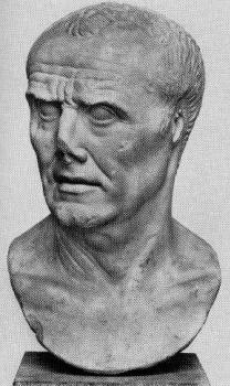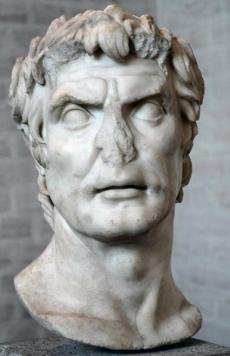
As discussed in a previous article, the fall of the Roman Republic cannot be attributed to one individual, rather it was a collection of 'warlords' that brought about the end of the oligarchy. That being said, it is interesting to debate which of the warlords caused most damage to the Republic, and today I will be considering Marius and Sulla. Gaius Marius’ military reforms no doubt provided grounds for greater influence to the individual over the state and Lucius Cornelius Sulla’s march on Rome and dictatorship fell even closer to the monarchical system that the Romans were so desperate to avoid. It is not unreasonable however to suggest that these men, warlords if you will, simply exposed the cracks in this already crumbling system. After all it was personalities not policies that which counted for most in the political world of the late republic. It is not perhaps the nature of Marius or Sulla’s reforms that contribute most to the collapse of the Republic but rather their own legacy post mortem and how that was interpreted and built upon by their juniors (namely Pompey and Caesar) that lead to the eventual collapse. In a stark comparison of Marius and Sulla however, the latter can be argued to have contributed more to the Republic’s collapse as an individual, twisting Marius’ military reforms to his own personal advantage from which he reigned as supreme dictator, undermining the very essence of the oligarchical system; that is, to prevent tyrannical monarchs.
After success in the Jugurthine war, during which he was elected military tribune, succeeded his commanding officer Q. Mettelus, and became Consul, Marius had gained much favour and was loved by his troops as he was said to share their rations and work beside them. These are not the characteristics of a power hungry politician but rather a good general who genuinely cared for Rome and his troops and did not want to see the collapse of the Republic, let alone cause it. Following the defeat of Jugurtha in 105, two Celtic Tribes from Gaul, The Cimbri and Teutones, entered the North of Italy seeking to relocate and settle, bringing with them their entire peoples including women and children, both of which would fight for the tribe. After a dramatic loss of some 80,000 men at the battle of Arausio, Marius was called upon in a state of military emergency and revolutionised the Roman army in order to prevent the collapse of the Republic not cause it.

He made several reforms involving the equipment the army used but more importantly for this topic he allowed the capite censei (men without land) to join the Roman army and armed and trained them with state funds which was heavily criticised though of course this greatly increased the army’s strength in numbers. Many argue that this encouraged soldiers to join the army for profit and plunder rather than to serve Rome with a sense of duty as before, something that Sulla capitalised on later.
Younger than Marius, Sulla was appointed Quaestor for him during the Jugurthine War and after its conclusion they argued as to which of them was more responsible for bringing the conflict to a close. Furthermore, Sulla played a key role for the Republic in the Social War and in 88 BC was rewarded with a consulship and the honour of defeating King Mithridates of Pontus. However, the task was transferred to Marius by one of his political allies and Sulla was furious. In retaliation Sulla rallied his men by convincing them that they would miss out on the plunder and booty of Asia by allowing Marius’ men to fight the war and so, with the support of his personal army, Sulla marched on and captured Rome. Sulla saw the potential in the military reforms that Marius had made and used them in this instance to his advantage, bribing his army into marching with him against the Republic. Later, having defeated Mithridates, Sulla marched on Rome in 82 BC for a second time, (with Marius having now died from a heart attack) this time imposing himself as dictator. Although Marius provided the means by which to do so, Sulla was the real warlord out of the pair and can be overwhelmingly blamed for contributing more greatly to the collapse of the Republic.
What’s your opinion, there are many more elements to consider regarding Marius and Sulla that there simply isn’t time to mention in this article. Why not do some of your own research and make your own conclusions. The best thing about history is that although there is a lot of fact involved, when it comes to considering why people took certain actions, there is no right answer.
IMAGE 1: http://www.nndb.com/people/114/000095826/gaius-marius-1.jpeg - A bust of Marius.
IMAGE 2: http://www.livius.org/a/1/romans/sulla_mus_munchen1.JPG - A bust of Sulla.

0 Comment:
Be the first one to comment on this article.